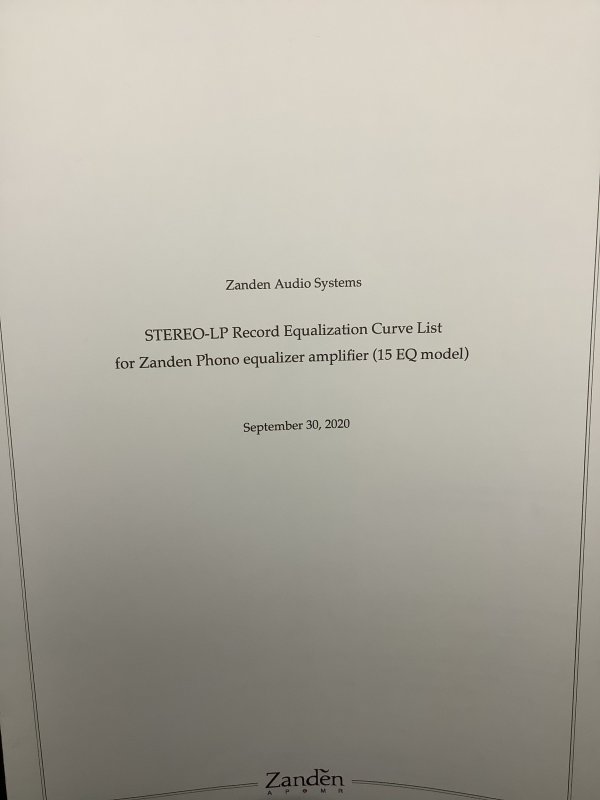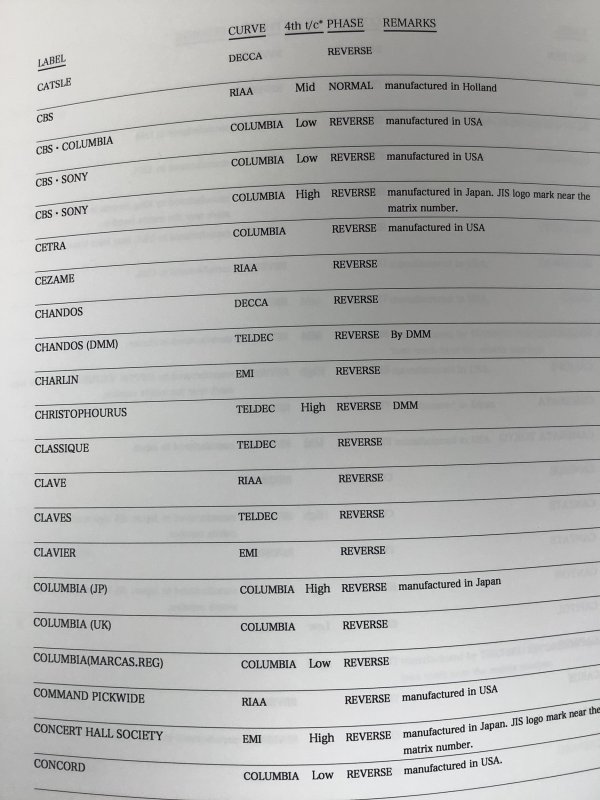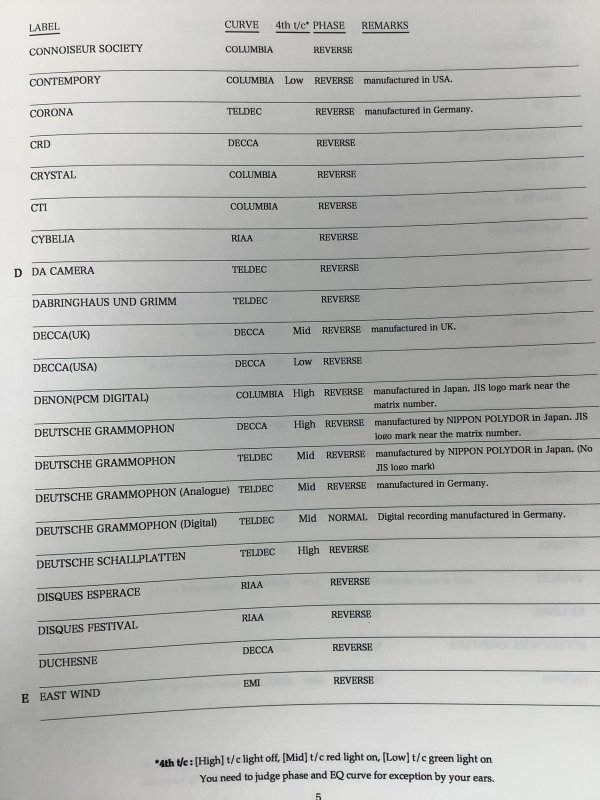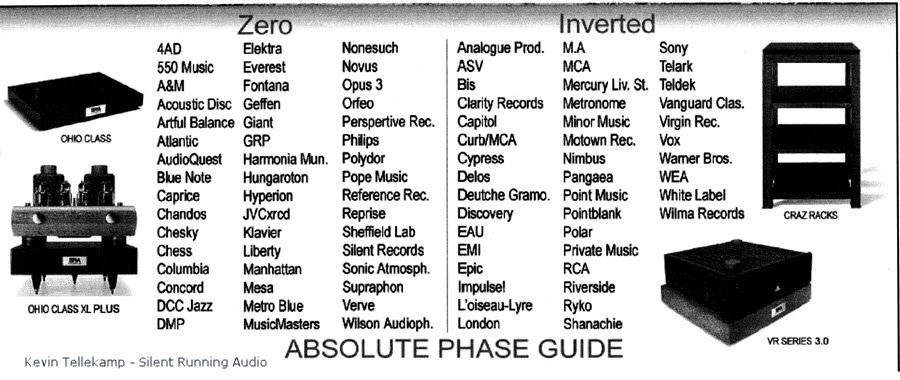Zanden 1200 Signature
- Thread starter Marcus
- Start date
You are using an out of date browser. It may not display this or other websites correctly.
You should upgrade or use an alternative browser.
You should upgrade or use an alternative browser.
Love this gif Howie. Awesome.
Thanks and it's apt too, really would like to see what Marcus thinks!Love this gif Howie. Awesome.
There’s so much to like about the zanden (also the Engstrom gear)... such a beautiful design ethos, also very much loving the divins as well... there is some gear that just seems to be extra soulful and capture an amazing sense spirit. Hard to define but you can definitely see it when gear has it.
Last edited:
Hi CKKeung,Zanden Audio Systems Ltd.
www.zandenaudio.com
Have you heard it? Seems like the specs show it to be quieter by 3db which is pretty meaningful, but imagine it is about a lot more than just one spec.
Sorry you had to wait so long for my thoughts on 1200 Signature. More than two months of lockdown just killed my will and motivation to write.
1200 Mk3 is a very quiet phono stage. I have tried it with medium efficiency speakers with up to 95dB’s and it was hard to detect any meaningful noise. Even some solid state line stages and power amps were too noisy to detect Mk3 in the system. Nonetheless the Signature is even quieter and this is obvious from the moment you drop the needle on the record. It has even less low-level parasitic noises and consequently more low-level details. I would say new and fully balanced circuits is a major reason for this. I also like designer’s decision to implement a fixed 5Hz subsonic filter because it reduces annoying bass cone wobbling and perhaps this has also some other sonic benefits.
As is known 1200 Signature has fully balanced circuits with RCA and XLR output (XLR input is an option). Model 3000 also has RCA and XLR inputs and outputs but it’s balanced operation is achieved with transformers. Since my cj ART mono amps are single ended, I use only RCA inputs and outputs but will try balanced connection between phono and line stage in the future. Might be interesting...
1200 Mk3 was not exactly your first choice if razor-sharp transient response or super tight bass is your cup of tea. Instead it sounded extremely balanced, natural and (if I may say) musical, so I never felt the need for something else. As good as Mk3 is, the Signature is better in every imaginable way. It is considerably faster, has better control all over the frequency range, especially in the bass that is also stronger, deeper and more detailed. At first I had a feeling the upper bass/lower midrange has just a bit less body but in fact instruments have always enough of it but without a bit of Mk3’s extra fat.
Even though I never felt the Mk3’s reproduction of starting transients was in any way lacking, this part of reproduction seemed to lost some of its attractiveness when I switched from Karan solid state to conrad-johnson tube amps. With the Signature, I don’t miss anything. Transients are super fast, precise and articulate and it would be interesting to compare this detail to a high quality solid state unit. Maybe I’ll borrow a Pass XP-27 phono stage from a friend and we’ll “see”. Small dynamic gradations and dynamic contrasts are so much more real and persuasive with the Signature and same goes for beautiful timbres.
On first listen Signature seemed a bit less bright than the Mk3 but after a while I realized that although this is attractive most of the time, it’s still additional brightness, which is substituted with Signature’s superior and even more natural transparency and resolution, deeper soundstage, more space and air between instruments, better order in the orchestra and increased micro dynamic contrasts.
I could never describe the sound of Mk3 with a specific color or sonic character but Signature is even more invisible. Yes, Mk3 in comparison sounds a bit gentler, softer and less controlled but both are similarly colorless. Acoustic instruments with Signature just sound more like real instruments with less various additives.
I tried most of Signature’s new equalization features. The added 4th time constant is especially interesting but I need more time to be able to comment. Also, I don’t fully understand what exactly is 55, 45 and 42.5kHz 4th time constant frequency. Yamada-san doesn’t give an exact explanation, only a hint it’s connected with the characteristics of Neumann, Ortofon and Westrex cutting heads.
Note that my comments about Mk3 holds for the old version which was recently substituted with the Mk3 2020 version (https://www.whatsbestforum.com/threads/zanden-1200-mk3-2020.31332/#post-673436 ). It was upgraded with all new eq options and subsonic filter plus some other changes in circuits which means it is actually a different animal.
Here’s a few pages from Zanden eq curve list.



1200 Mk3 is a very quiet phono stage. I have tried it with medium efficiency speakers with up to 95dB’s and it was hard to detect any meaningful noise. Even some solid state line stages and power amps were too noisy to detect Mk3 in the system. Nonetheless the Signature is even quieter and this is obvious from the moment you drop the needle on the record. It has even less low-level parasitic noises and consequently more low-level details. I would say new and fully balanced circuits is a major reason for this. I also like designer’s decision to implement a fixed 5Hz subsonic filter because it reduces annoying bass cone wobbling and perhaps this has also some other sonic benefits.
As is known 1200 Signature has fully balanced circuits with RCA and XLR output (XLR input is an option). Model 3000 also has RCA and XLR inputs and outputs but it’s balanced operation is achieved with transformers. Since my cj ART mono amps are single ended, I use only RCA inputs and outputs but will try balanced connection between phono and line stage in the future. Might be interesting...
1200 Mk3 was not exactly your first choice if razor-sharp transient response or super tight bass is your cup of tea. Instead it sounded extremely balanced, natural and (if I may say) musical, so I never felt the need for something else. As good as Mk3 is, the Signature is better in every imaginable way. It is considerably faster, has better control all over the frequency range, especially in the bass that is also stronger, deeper and more detailed. At first I had a feeling the upper bass/lower midrange has just a bit less body but in fact instruments have always enough of it but without a bit of Mk3’s extra fat.
Even though I never felt the Mk3’s reproduction of starting transients was in any way lacking, this part of reproduction seemed to lost some of its attractiveness when I switched from Karan solid state to conrad-johnson tube amps. With the Signature, I don’t miss anything. Transients are super fast, precise and articulate and it would be interesting to compare this detail to a high quality solid state unit. Maybe I’ll borrow a Pass XP-27 phono stage from a friend and we’ll “see”. Small dynamic gradations and dynamic contrasts are so much more real and persuasive with the Signature and same goes for beautiful timbres.
On first listen Signature seemed a bit less bright than the Mk3 but after a while I realized that although this is attractive most of the time, it’s still additional brightness, which is substituted with Signature’s superior and even more natural transparency and resolution, deeper soundstage, more space and air between instruments, better order in the orchestra and increased micro dynamic contrasts.
I could never describe the sound of Mk3 with a specific color or sonic character but Signature is even more invisible. Yes, Mk3 in comparison sounds a bit gentler, softer and less controlled but both are similarly colorless. Acoustic instruments with Signature just sound more like real instruments with less various additives.
I tried most of Signature’s new equalization features. The added 4th time constant is especially interesting but I need more time to be able to comment. Also, I don’t fully understand what exactly is 55, 45 and 42.5kHz 4th time constant frequency. Yamada-san doesn’t give an exact explanation, only a hint it’s connected with the characteristics of Neumann, Ortofon and Westrex cutting heads.
Note that my comments about Mk3 holds for the old version which was recently substituted with the Mk3 2020 version (https://www.whatsbestforum.com/threads/zanden-1200-mk3-2020.31332/#post-673436 ). It was upgraded with all new eq options and subsonic filter plus some other changes in circuits which means it is actually a different animal.
Here’s a few pages from Zanden eq curve list.



Last edited:
Well written Marcus! As a proud 1200sig owner for 5 months now, I couldn’t agree more that this phonostage is a masterpiece.
It is transparent, dynamic, fast, controlled with beautiful timbre, at the same time very versatile for all genre of music. Couldn’t be happier!
It is transparent, dynamic, fast, controlled with beautiful timbre, at the same time very versatile for all genre of music. Couldn’t be happier!
Sorry you had to wait so long for my thoughts on 1200 Signature. More than two months of lockdown just killed my will and motivation to write.
1200 Mk3 is a very quiet phono stage. I have tried it with medium efficiency speakers with up to 95dB’s and it was hard to detect any meaningful noise. Even some solid state line stages and power amps were too noisy to detect Mk3 in the system. Nonetheless the Signature is even quieter and this is obvious from the moment you drop the needle on the record. It has even less low-level parasitic noises and consequently more low-level details. I would say new and fully balanced circuits is a major reason for this. I also like designer’s decision to implement a fixed 5Hz subsonic filter because it reduces annoying bass cone wobbling and perhaps this has also some other sonic benefits.
As is known 1200 Signature has fully balanced circuits with RCA and XLR output (XLR input is an option). Model 3000 also has RCA and XLR inputs and outputs but it’s balanced operation is achieved with transformers. Since my cj ART mono amps are single ended, I use only RCA inputs and outputs but will try balanced connection between phono and line stage in the future. Might be interesting...
1200 Mk3 was not exactly your first choice if razor-sharp transient response or super tight bass is your cup of tea. Instead it sounded extremely balanced, natural and (if I may say) musical, so I never felt the need for something else. As good as Mk3 is, the Signature is better in every imaginable way. It is considerably faster, has better control all over the frequency range, especially in the bass that is also stronger, deeper and more detailed. At first I had a feeling the upper bass/lower midrange has just a bit less body but in fact instruments have always enough of it but without a bit of Mk3’s extra fat.
Even though I never felt the Mk3’s reproduction of starting transients was in any way lacking, this part of reproduction seemed to lost some of its attractiveness when I switched from Karan solid state to conrad-johnson tube amps. With the Signature, I don’t miss anything. Transients are super fast, precise and articulate and it would be interesting to compare this detail to a high quality solid state unit. Maybe I’ll borrow a Pass XP-27 phono stage from a friend and we’ll “see”. Small dynamic gradations and dynamic contrasts are so much more real and persuasive with the Signature and same goes for beautiful timbres.
On first listen Signature seemed a bit less bright than the Mk3 but after a while I realized that although this is attractive most of the time, it’s still additional brightness, which is substituted with Signature’s superior and even more natural transparency and resolution, deeper soundstage, more space and air between instruments, better order in the orchestra and increased micro dynamic contrasts.
I could never describe the sound of Mk3 with a specific color or sonic character but Signature is even more invisible. Yes, Mk3 in comparison sounds a bit gentler, softer and less controlled but both are similarly colorless. Acoustic instruments with Signature just sound more like real instruments with less various additives.
I tried most of Signature’s new equalization features. The added 4th time constant is especially interesting but I need more time to be able to comment. Also, I don’t fully understand what exactly is 55, 45 and 42.5kHz 4th time constant frequency. Yamada-san doesn’t give an exact explanation, only a hint it’s connected with the characteristics of Neumann, Ortofon and Westrex cutting heads.
Note that my comments about Mk3 holds for the old version which was recently substituted with the Mk3 2020 version (https://www.whatsbestforum.com/threads/zanden-1200-mk3-2020.31332/#post-673436 ). It was upgraded with all new eq options and subsonic filter plus some other changes in circuits which means it is actually a different animal.
Here’s a few pages from Zanden eq curve list.
Well written Marcus! As a proud 1200sig owner for 5 months now, I couldn’t agree more that this phonostage is a masterpiece.
It is transparent, dynamic, fast, controlled with beautiful timbre, at the same time very versatile for all genre of music. Couldn’t be
Can you use a MM with SUT or is it strictly MC?Well written Marcus! As a proud 1200sig owner for 5 months now, I couldn’t agree more that this phonostage is a masterpiece.
It is transparent, dynamic, fast, controlled with beautiful timbre, at the same time very versatile for all genre of music. Couldn’t be happier!
MC only but I was told can be changed easily locally.Can you use a MM with SUT or is it strictly MC?
On first listen Signature seemed a bit less bright than the Mk3 but after a while I realized that although this is attractive most of the time, it’s still additional brightness, which is substituted with Signature’s superior and even more natural transparency and resolution, deeper soundstage, more space and air between instruments, better order in the orchestra and increased micro dynamic contrasts.
Excellent coverage and well written Marco, especially with the contrasts to the Mk3.
This is only the second time I've seen phase listings for various labels with the Zanden list having more detail. The other one from Kevin Tellekamp (SRA) is below for comparison.
There is another nice forum article on the 1200 Signature at Audio Exotics.
I'd love to hear this Zanden phonostage. Congratulations!


Zanden Audio Systems Model 1200 Signature phono preamplifier
Zanden Audio Systems’ top-of-the-tree Model 1200 phono preamplifier has been through several iterations over its long and illustrious career, but arguably
Yes.Does the 1200 Mk3 Sig use Step up transformers inside for each input?
Thanks. I kind of wish Zanden would allow some MM inputs so we can play around with external SUTs.Yes.
Maybe you can let manufacture one as a customized unit with MM inputs. I would play around with external step ups, too.
My Zanden Jinpu phono is the same. I'm not sure Zanden does any mm inputs on any of his phone amps...Maybe you can let manufacture one as a customized unit with MM inputs. I would play around with external step ups, too.
Think Zanden made a mm phono in the past. Model 1000. Since it has only 33dB of gain I think it’s a mm. Check the link...
Similar threads
- Replies
- 6
- Views
- 2K
- Replies
- 1
- Views
- 2K
- Replies
- 3
- Views
- 4K
- Replies
- 3
- Views
- 3K
| Steve Williams Site Founder | Site Owner | Administrator | Ron Resnick Site Owner | Administrator | Julian (The Fixer) Website Build | Marketing Managersing |








